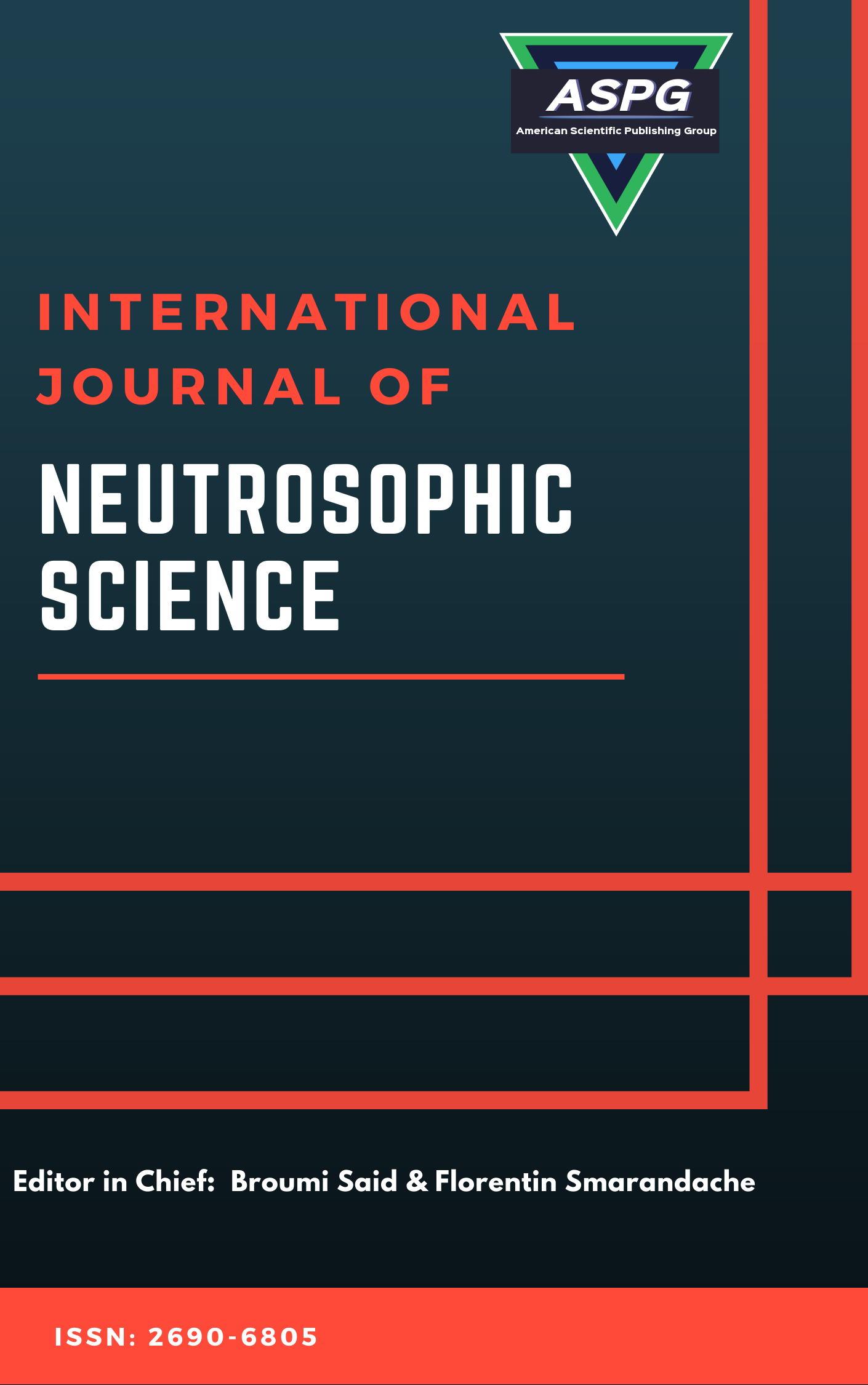

Volume 26 , Issue 1 , PP: 136-143, 2025 | Cite this article as | XML | Html | PDF | Full Length Article
Michael Raiser Vásquez-Ramírez 1 , Ketty Marilú Moscoso-Paucarchuco 2 , Percy Tito Avila-Zanabria 3 , Omar Arturo Vivanco-Nuñez 4 , Paul Cesar Calderon-Fernandez 5 , Williams Ronald Olivera-Acuña 6 , Manuel Michael Beraún-Espíritu 7
Doi: https://doi.org/10.54216/IJNS.260112
The Sustainable Development of a country is a relatively new concept, where the right of each country to achieve decent economic and social development is accepted, and where there is well-being for the population. At the same time, the environment is respected. On the other hand, the Circular Economy is another recent concept where the efficient and effective use of resources and products is proposed, where the fundamental principle is the reuse of waste as far as possible and its rational use, to reduce environmental pollution, and providing economic savings for the country. This paper aims to study the relationship between the concepts of Circular Economy and Sustainable Development contextualized in the Peruvian department of Junín. To examine this relationship and its future behavior, there are challenges such as the existence of indirect relationships between these two concepts, dependent on other concepts; and relationships between concepts that are unknown, at least partially. Taking all this into account, a group of three experts on the subject in Junín was asked for their opinion to determine the relationship between the selected concepts. This allowed the representation of knowledge with the help of a Neutrosophic Cognitive Map (NCM) and the study of the dynamic behavior of concepts with the help of the Method for Hidden Patterns.
Circular Economy , Sustainable Development , Neutrosophic Cognitive Maps , Neutrosophic Number
[1] F. Feng, Z. Zhang, S. Tomasiello, and C. Zhang, "Multiple attribute decision making using an enhanced complex proportional assessment method based on probabilistic generalized orthopair fuzzy soft sets," Granular Computing, vol. 9, article 25, 2024.
[2] S. Pramanik and S. Chackrabarti, "A study on problems of construction workers in West Bengal based on neutrosophic cognitive maps," Int. J. Innov. Res. Sci. Eng. Technol., vol. 2, no. 11, pp. 6387–6394, 2013.
[3] K. Mondal and S. Pramanik, "A study on problems of Hijras in West Bengal based on neutrosophic cognitive maps," Neutrosophic Sets and Systems, vol. 5, pp. 21–26, 2014.
[4] R. P. Alava, J. M. Murillo, R. B. Zambrano, M. I. Z. Vélez, and M. Leyva-Vazquez, "PEST analysis based on neutrosophic cognitive maps: A case study for food industry," Neutrosophic Sets and Systems, vol. 21, pp. 84–92, 2018.
[5] A. J. P. Palacios, J. Estupiñán-Ricardo, I. A. C. Piza, and M. E. E. Herrería, "Phenomenological hermeneutical method and neutrosophic cognitive maps in the causal analysis of transgressions against the homeless," Neutrosophic Sets and Systems, vol. 44, pp. 147–156, 2021.
[6] M. S. Wajid, H. Terashima-Marin, P. N. Paul-Rad, and M. A. Wajid, "Violence detection approach based on cloud data and neutrosophic cognitive maps," J. Cloud Comput., vol. 11, no. 1, pp. 1–18, 2022.
[7] S. H. Al-subhi, E. I. Papageorgiou, P. P. Pérez, G. S. S. Mahdi, and L. A. Acuña, "Triangular neutrosophic cognitive map for multistage sequential decision-making problems," Int. J. Fuzzy Syst., vol. 23, no. 2, pp. 657–679, 2021.
[8] B. Chithra and R. Nedunchezhian, "Dynamic neutrosophic cognitive map with improved cuckoo search algorithm (DNCM-ICSA) and ensemble classifier for rheumatoid arthritis (RA) disease," J. King Saud Univ. - Comput. Inf. Sci., vol. 34, no. 6, pp. 3236–3246, 2022.
[9] L. A. L. Ocana, M. A. S. Barreno, and N. M. L. Orozco, "Neutrosophic cognitive map for the analysis of stomatognathic incidences at the TRUEDENT Dental Specialties Center," Neutrosophic Comput. Mach. Learn., vol. 21, pp. 23–35, 2022.
[10] G. W. Wei, J. Wu, Y. F. Guo, J. Wang, and C. Wei, "An extended COPRAS model for multiple attribute group decision making based on single-valued neutrosophic 2-tuple linguistic environment," Technol. Econ. Dev. Econ., vol. 27, no. 2, pp. 353–368, 2021.
[11] M. D. L. L. Cepeda, J. V. P. Quilambaque, A. M. N. Quispe, E. T. M. Álvarez, and J. F. R. Pérez, "Hermeneutical analysis of the determinants of obesity using neutrosophic cognitive maps," Neutrosophic Sets and Systems, vol. 44, pp. 90–99, 2021.
[12] V. Surya and R. S. Porchelvi, "Evaluation of vital parameters influencing oxygen demand with Pythagorean neutrosophic-fuzzy cognitive map," Indian J. Sci. Technol., vol. 17, no. 29, pp. 3018–3025, 2024.
[13] R. A. Berrezueta, E. M. Aldaz, B. C. E. López, and J. A. A. Aguirre, "Neutrosophic assessment of personality traits," Neutrosophic Sets and Systems, vol. 62, pp. 137–145, 2023.
[14] K. Bhutani, S. Gaur, P. Panwar, and S. Garg, "A neutrosophic cognitive maps approach for PESTLE analysis in food industry," in Proc. Int. Conf. Emerging Trends Expert Appl. Security, Springer Nature Singapore, 2023, pp. 349–360.
[15] W. O. Chávez, L. Q. Sotomayor, J. K. V. Pérez, E. P. Dávila, A. M. L. Talavera, and R. L. T. Toribio, "Study of the circular economy model as a strategy for the development of Peru based on neutrosophic cognitive maps," Neutrosophic Sets and Systems, vol. 60, no. 1, pp. 227–233, 2023.
[16] S. Broumi, S. Sivasankar, A. Bakali, and M. Talea, "Balanced neutrosophic Fermatean graphs with applications," in Neutrosophic Algebraic Structures and Their Applications, Springer, 2022, pp. 1–15.
[17] K. Ö. Karagülle, "TOPSIS method and applications on bipolar single-valued neutrosophic graphs," Global Knowledge Publishing House, USA, 2022.
[18] D. Karabašević et al., "Zeroing neural network based on neutrosophic logic for calculating minimal-norm least-squares solutions to time-varying linear systems," Neural Process. Lett, pp. 1–23, 2023.
[19] A. Paraskevas and M. Madas, "A neutrosophic model for measuring evolution, involution, and indeterminacy in species: Integrating common and uncommon traits in environmental adaptation," Neutrosophic Syst. Appl., vol. 23, pp. 23–32, 2024.
[20] M. Leyva, P. Del Pozo, and A. Peñafiel, "Neutrosophic DEMATEL in the analysis of the causal factors of youth violence," Int. J. Neutrosophic Sci., vol. 18, no. 3, pp. 199–207, 2022.